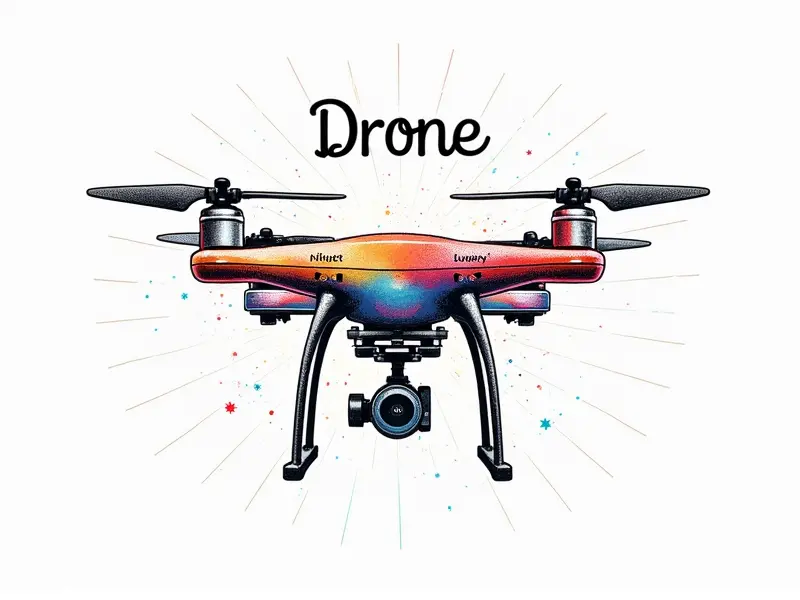Are RC quadcopters easy to fly?

Is Flying RC Quadcopters Easy for Beginners?
Flying remote control (RC) quadcopters has become increasingly popular among hobbyists and enthusiasts alike. However, one of the most common questions asked by newcomers is whether these aerial drones are easy to fly or not. The answer isn't straightforward as it depends on various factors such as the type of quadcopter, user experience, and practice time.
Can Anyone Easily Master RC Quadcopter Flight?
The ease with which someone can master flying an RC quadcopter varies greatly from person to person. Beginners often find that the initial learning curve is steep due to the need for hand-eye coordination and understanding of basic flight principles. However, with practice and patience, anyone can become proficient in controlling these drones.
Beginner-Friendly: Are RC Quadcopters Easy to Pilot?
Many manufacturers design entry-level quadcopters specifically for beginners, featuring features such as automatic stabilization, one-key takeoff/landing, and GPS positioning. These built-in aids significantly reduce the complexity of flying, making it more accessible for novices.
Features That Simplify Quadcopter Control
- Automatic Stabilization: Keeps the drone steady in windy conditions.
- One-Key Takeoff/Landing: Allows users to start and stop flights with a single button press.
- GPS Positioning: Helps maintain location and altitude, preventing unwanted drift.
RC Quadcopter Flight: Simple or Challenging?
Flying an RC quadcopter can be both simple and challenging depending on the user's experience level. For those who are just starting out, it might seem daunting due to the need for precise control over pitch, roll, yaw, and throttle. However, with time and practice, these skills become second nature.
Key Skills Required for Quadcopter Flight
- Hand-Eye Coordination: Essential for maneuvering the drone accurately.
- Understanding of Aerodynamics: Knowledge of lift, drag, thrust, and weight is crucial.
- Quick Reflexes: Necessary to react promptly to unexpected situations in flight.
The Ease of Operating RC Quadcopters Explained
The ease of operating an RC quadcopter depends largely on the specific model and its features. Entry-level drones are designed with user-friendliness in mind, offering automatic stabilization and GPS assistance to make flying more intuitive.
Factors Influencing Ease of Use
- User Experience: More experienced pilots tend to find it easier due to familiarity with controls.
- Degree of Automation: Higher automation reduces the need for manual control, simplifying flight.
- Type of Quadcopter: Different models cater to varying skill levels, from beginner-friendly to advanced.
Flying RC Quadcopters: A Challenge or a Cakewalk?
The challenge level of flying an RC quadcopter can range from being a breeze for experienced pilots to a significant hurdle for beginners. The key lies in understanding the drone's capabilities and limitations, as well as investing time into learning proper techniques.
Challenges Faced by Beginners
- Learning Curve: Initial difficulty mastering basic flight controls.
- Safety Concerns: Risk of damaging the drone or causing injury due to inexperience.
- Maintaining Focus: Need for constant attention during flights to avoid accidents.
Quick Start Guide: Easy RC Quadcopter Flying Tips
To make your first few flights smoother, here are some tips that can help you get started easily:
Essential Pre-Flight Checks
- Battery Condition: Ensure batteries are fully charged and in good condition.
- Propeller Alignment: Check propellers for proper installation and alignment.
- Controller Settings: Verify that your controller is paired with the drone correctly.
Flying Techniques for Beginners
- Start Slowly: Begin with short, controlled flights to build confidence and skills.
- Practice Hovering: Focus on maintaining a steady hover before attempting maneuvers.
- Use Visual Aids: Look for landmarks or reference points to enhance spatial awareness.
Mastering RC Quadcopter Control: Is It Really Easy?
Mastery of RC quadcopter control is achievable but requires dedication and practice. While modern drones offer numerous features that simplify flight, becoming an expert still demands a significant amount of time spent honing your skills.
Steps to Mastery
- Start with Basic Models: Begin on entry-level drones before moving onto more advanced ones.
- Join Community Forums: Engage in discussions and learn from experienced pilots.
- Practice Regularly: Consistency is key to improving your flight skills over time.
Are RC Quadcopters Too Hard for Newbies?
The difficulty of flying an RC quadcopter can be a barrier for newbies, but it doesn't have to be insurmountsble. With the right approach and mindset, beginners can overcome initial challenges and enjoy the rewarding experience of mastering these aerial drones.
Advice for New Pilots
- Patient Learning: Take your time to understand each aspect before moving on.
- Safety First: Prioritize safety by familiarizing yourself with emergency procedures.
- Enjoy the Process: Embrace the learning journey and appreciate gradual improvements.
The Simplicity of RC Quadcopter Control
Despite the initial challenges, flying an RC quadcopter can indeed be simple once you get a hang of it. The combination of user-friendly features in modern drones and continuous practice makes mastering these aerial devices achievable for anyone willing to put in the effort.
Conclusion
Flying RC quadcopters is both challenging and rewarding, especially for beginners who are eager to learn. While there may be an initial learning curve, advancements in drone technology have made it easier than ever before to get started. By leveraging beginner-friendly features, engaging in regular practice, and staying committed to safety, new pilots can quickly transform from novices into skilled operators.

